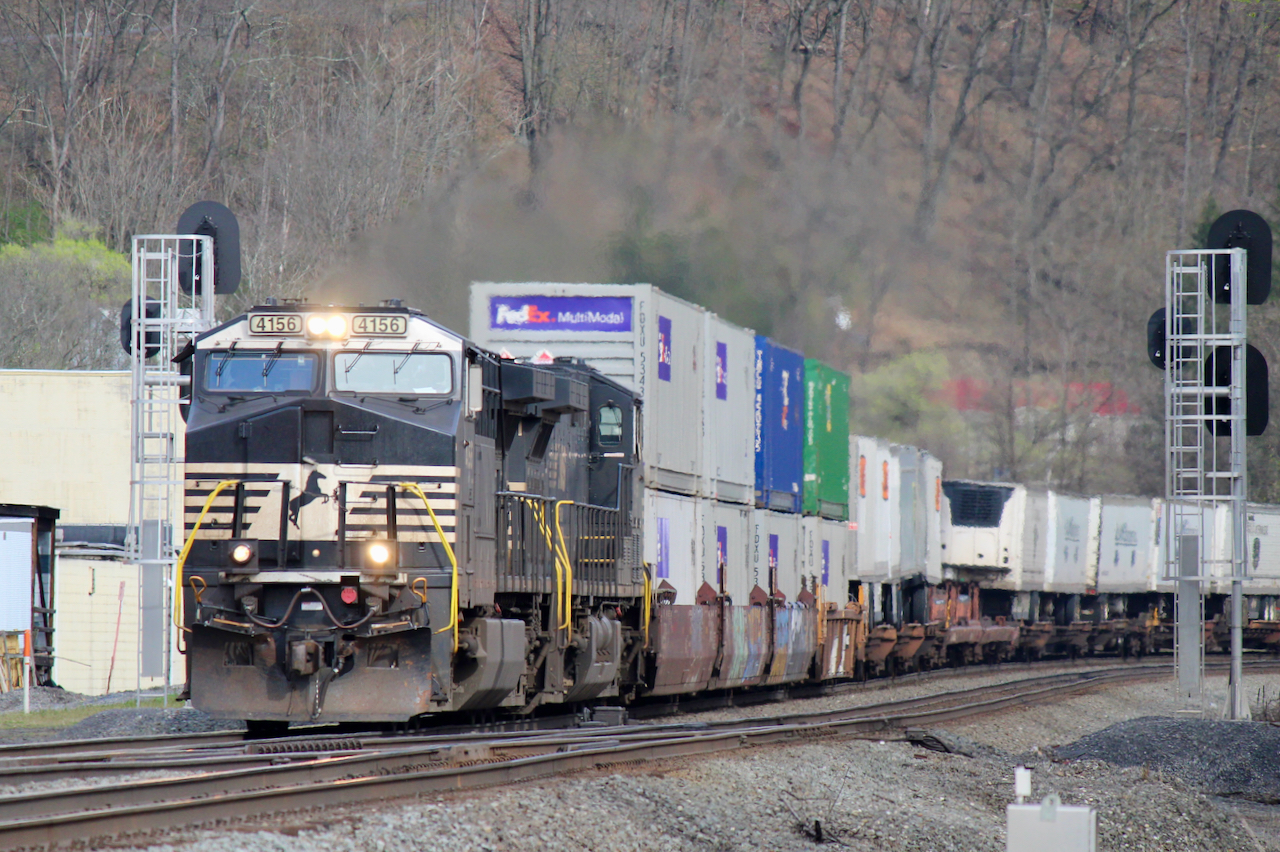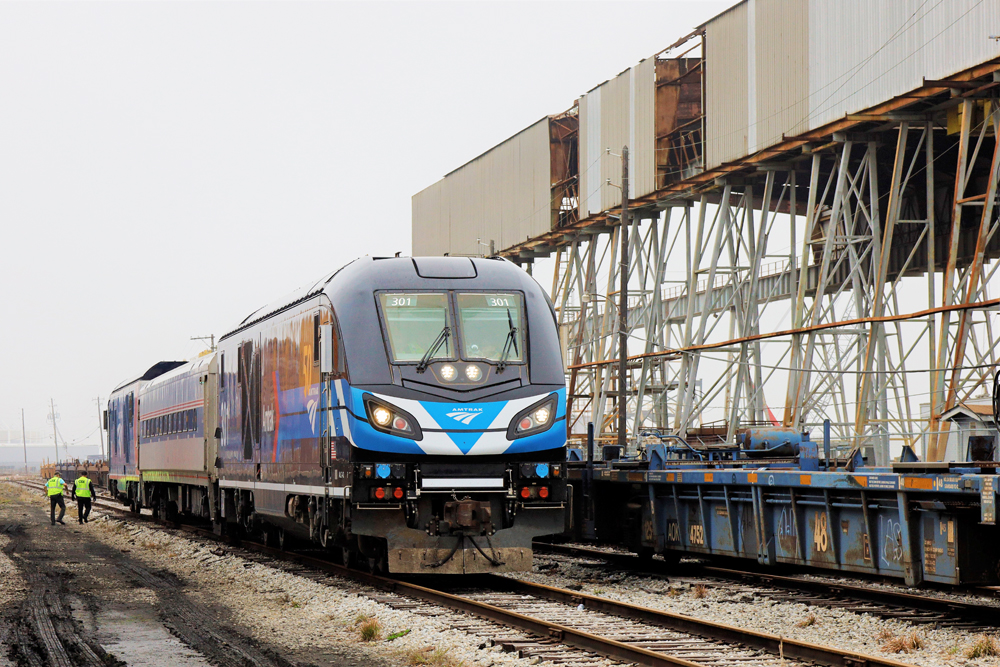
The proxy battle that activist investor Ancora Holdings is waging against Norfolk Southern isn’t just about the direction NS should take and who should run the company. It’s a fight for the future of the railroad industry.
The Cleveland-based activist investor seems to be taking the position that railroads shouldn’t grow. They argue that intermodal, the only business segment that’s gaining volume, isn’t profitable enough to make up for the delays it inflicts on lucrative merchandise and bulk traffic. So Ancora says NS should forgo intermodal growth and instead maximize the efficiency and profitability of its carload and bulk business, all while slashing costs and boosting productivity.
This is a fine strategy if you’re a short-term investor. The stock price will rise and you’ll pocket a handsome return well before the cash cow is milked dry.
But if you’re thinking long term, the fatal flaw with this approach should be obvious to anyone who follows railroading. Carload business is in long-term decline, and you can’t forever earn more and more money on less and less business.
Every year the Class I railroads tout how their industrial development teams attract new rail-served facilities. What they don’t say — but traffic data show — is that merchandise business is a leaky bucket. Carloads are draining out the bottom of the bucket faster than new business is trickling in. Overall carload volume has been sinking for decades, a trend that has been most pronounced in the East. And there’s no sign that will change.
In Norfolk Southern’s case, carload traffic has fallen 9% over the past five years and 7% over the past 10. Meanwhile, coal volume is down roughly 50% in both periods.
The railroad’s intermodal traffic, on the other hand, surged 9% over the last five years and posted an identical gain in the last 10 years. But since hauling containers comes with an operating ratio above 60%, the Ancoras of the world say more intermodal traffic shouldn’t be on the railroad.
Ancora also wants NS to shed loose carload traffic that requires multiple handlings en route. Jacking up rates so that freight hits the road always has unintended consequences. Will it prompt some facilities to abandon rail altogether? Are carloads that “don’t fit the network” the keys to keeping a short line or branch line viable?
NS CEO Alan Shaw has sought to stem the decline of carload business while at the same time gaining new intermodal traffic. Both goals require providing consistent and reliable service year in and year out. Shaw’s “better way forward” strategy, outlined at the railroad’s investor day in December 2022, aims to do just that.
The idea is that by not furloughing train crews during a downturn, the railroad will have the resources at the ready to respond to the eventual upswing in traffic. In the short term, carrying surplus crews raises the operating ratio. But Shaw says it will pay off in the long term. First, it avoids service recovery costs and lost volume. Second, maintaining service levels through thick and thin will allow shippers to build more of their supply chains around the railroad, which in turn will bring NS new traffic, higher revenue, and bigger profits.
“Leadership’s operating plan has resulted in higher costs, shrinking margins, and a worse operating ratio,” Ancora notes with a firm grasp of the obvious. This is a feature of the NS strategy — not a bug — and it’s exactly what Shaw said would happen in a low-demand environment.

Ancora says Shaw’s service and resiliency theory is untested and unproven. But we know the results of not keeping a sufficient buffer of train crews: Lost freight volume. The periodic bouts with crew shortages have plagued the industry for more than a decade. The culprit for most of them? Wall Street’s focus on the operating ratio, which has prompted railroads to run leaner than they should.
Ancora’s call for cost-cutting and crew furloughs is tone deaf. The railroad industry has just come out of the mother of all crew shortages, which prompted a backlash from shippers and regulators while diverting freight to trucks.
The pandemic-related crew shortages further damaged relationships with rail shippers who were already weary of disruption from the implementation of Precision Scheduled Railroading operating models at the publicly traded U.S. railroads. That does not bode well for the intermodal traffic that has been railroads’ growth engine, or for the carload traffic that generates two-thirds of the industry’s revenue.
A major carload shipper, for example, shifted more than 40% of its rail traffic to trucks during the widespread service problems on the big four U.S. railroads in 2022. A quarter of the company’s normal rail volume remains on the highway – and it may never return. Railroads cannot get caught short of crews again and must break the cycle of staffing-related service failures.
Across the industry, rail executives are concerned about Ancora’s proxy battle at NS. The message it sends: Short-term activists will take aim at any railroad that reduces the emphasis on the operating ratio while trying to create an upward spiral of service, growth, profits, and investment. And that, they say, will have a chilling impact on rail volume and the long-term prospects of railroads, their employees, customers, and shareholders.
You can reach Bill Stephens at bybillstephens@gmail.com and follow him on LinkedIn and X @bybillstephens














UP succumbed to the same pressure from an activist fund, and got a new CEO. No one forecast that event as defining the industry’s future. Why is the sky now falling?
Bill Stephens: Your article is arrow straight to the point. A note to hedge funds: take your money and go buy trucking companies.
Mr. Stephens, perhaps you should look back to the 1990’s and the expensive and painful experience CSX had with a hedge fund.
The only thing I fault Alan Shaw for is turning NS into a limitless ATM for the region of East Palestine, Ohio after the accident there.
It’s time to quit beating up on a dead guy (Harrison, dead seven years now). The one(s) responsible are the living who are in charge. Getting the most out of your resources/investments is a no-brainer. Anyone want to invest their money for a lower return? That said, the drive to constantly achieve better results can get out of hand. It must be balanced with realism (some days you get the bear, some days the bear gets you). Wisdom, maturity, whatever one calls it, it’s in need these days.
None, NONE, of the class 1s have abandoned Harrison-ism, the cult of PSR. All of the class 1s run excessively long freights at slow speeds. All of the class 1s have ripped out classification yards and sidings. All of the class 1s have reduced their unionized workforces by one third or more. All of the class 1s have reduced CapEx this year and most CapEx goes to replace worn out plant, not capacity additions. All class 1s spend far more on share buybacks than CapEx (buybacks were illegal until 1982 when Reagan made the legal by executive order).
Trains Magazine trumpets double tracking this-or-that segment (most recently Sandpoint-Spokane) that takes 20 years, FFS. That is really pathetic, isn’t it? Isn’t that emblematic of the rot in the US infrastructure and economy in general? How long would Russia or China take to remove such bottlenecks? Certainly not 20 years.
Bill Stephens, Norfolk Southern got caught in a bad circumstance. Such a disaster could happen to ANY of the class 1s today. They are all wrecks waiting to happen. Claiming that the NS/Ancora situation is a watershed event ignores what every other class 1 is doing and has done. Didn’t Union Pacific recently install a Harrison clone as CEO and double down on PSR? Shaw Isn’t really any different; he’s under a regulatory and investor microscope and wants to keep his $8M a year job and juice those out-of-money options to become a centimillionaire. He’ll get there.
We need strict laws prescribing manning, operating practices, safety and investment. In 2003 there was the northeast blackout; it led to strict regulation. That is what is needed. It would level the playing field and serve the public interest. The Robber Barrons, Shaw included, are incapable of serving the public interest.
I hope NS sticks to its plan. There is money to made if they provide the services. Keeping trains crews is the way to do this. Ancora should take its money out and invest it somewhere else. It looks to me they don’t know much about the rail industry.
David, hedge funds don’t know much about ANY of the industries they “invest” in. All they know (and care about) are short term gains gotten by sucking all the blood from t he stone, then casting that stone away while they look for their next target. I suppose that is one way to make a living, but it is also a great mechanism for the long term destruction of American business.
As far as investing somewhere else, I wouldn’t wish their “investement” in my least favorite industry. that said, I might suggest an investment in cocaine, which appears to be one industry most Wall streeters of their ilk seem to know the most about.
Today’s railroads remind me of the streaming wars. Companies like Disney and Paramount are sacrificing profitable legacy cable business to build a streaming service they hope will become profitable someday. Railroads have been sacrificing labor intensive carload traffic that pays the bills and focus almost exclusively on intermodal growth. The problem is not only is Intermodal smaller margin, but the trains are longer and eat up alot of capacity. That further hurts carload service. Intermodal would benefit from faster more frequent service. But that just doesn’t fit into the heavy freight rail service we have. If we hadn’t ripped up all the interurban and secondary mainlines and converted those to passenger and fast intermodal lines, they possibly could have even turned a profit. But the ICC killed that and government took over the passenger business and now we are stuck with those failures.
The crew availability problem could be helped with temporary railroad workers. But the unions would fight that.
I am certain there are many more lost spur and short-line creation stories.
One other point, Bill. Railroads have been actively discouraging additional carload revenue by aggressively closing industrial spurs for smoother railroad operation. Carloads take local freights and local switching … railroads HATE terminal operations. I submit as my operational point-in-fact, the Union Pacific “West Line” from Chicago IL to Geneva IL.
Class 1’s don’t mind industrial spurs, they just don’t want 1 customer per spur. Just looking at your example (the UP West Line) there is a long spur coming off the West Chicago yard that used to be the connection to the old CGW line to St Charles. The spur keeps getting cut back but it still has multiple online customers and the spur comes off a yard. Perfect.
Just a glimpse south, the BNSF turned their “River Sub” into what amounts to a very long industrial spur that goes all the way to West Chicago and serves a large number of customers. It also comes off the Aurora Yard and weaves its way north.
These are the spurs Class 1’s can deal with.
Think how many single customer spurs there used to be on that UP West Line. The Hammerschmidt Elevators in Lombard, the Wheaton Lumber (now Hines), Winfield Fuel & Supply, JelSert still has one in West Chicago, why? Because the UP Crew Training Center and Field Office is next door!
Mr. Watt: Maybe I’m being dense but could you please elaborate on your last sentence?